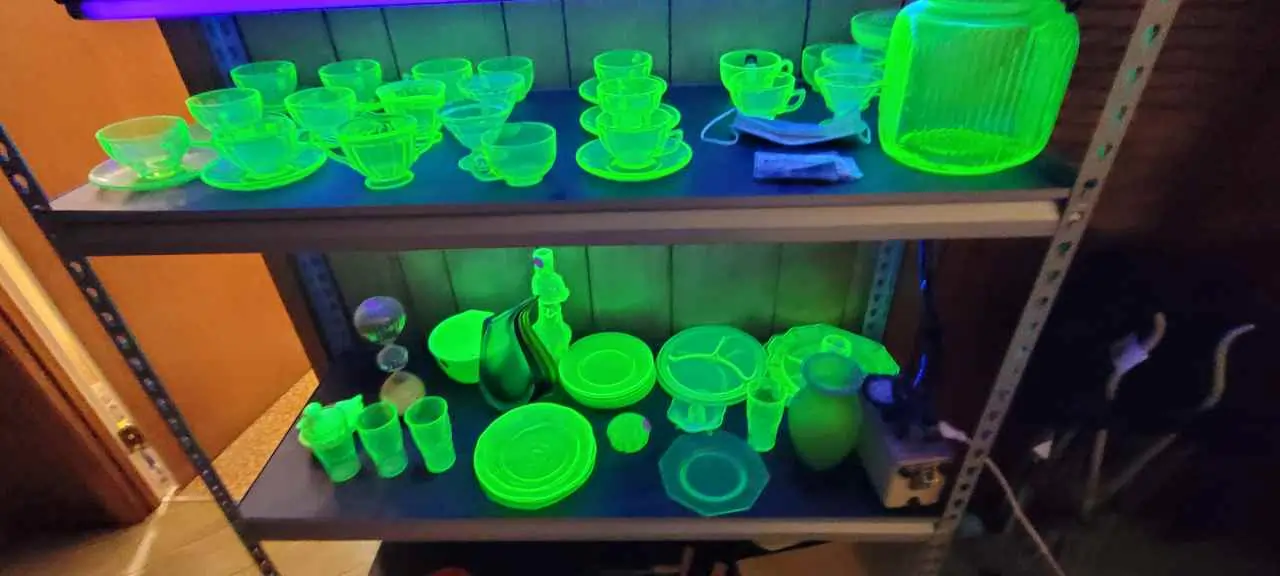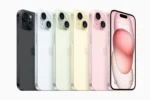Have you ever seen glass vessels with an unexpected green glow? That’s uranium glass, a unique type of vintage glass with a surprising scientific twist. This blog post will explore what uranium glass is, how it shines, and address a common concern: is it safe to handle and collect?
What Is Uranium Glass?
Uranium glass is a type of glass that gets its color from uranium added to it before melting. Usually, it contains low levels of uranium, ranging from just a little bit to 2%. However, some pieces have been discovered to have as much as 25% uranium.
People started adding uranium to glass because it creates a fluorescent effect, making the glass glow under ultraviolet light. This made it really popular, and it began to be made in factories across Europe and North America.
Most uranium glass is used for decorative items, tableware, or household stuff. Many pieces look similar to carnival glass, which has bright, iridescent colors. Among all these items, uranium glass bowls are especially loved.
But during the 1940s, when the Second World War was happening, the production of uranium glass went down a lot. This was because it was hard to get uranium during the war, so there wasn’t enough to make the glass.
How to Identify Uranium Glass
The simplest method to confirm if uranium glass is genuine is to examine it under UV light. Authentic uranium glass will emit a vivid green glow when exposed to UV light. The intensity of the glow may vary depending on the amount of uranium present, but if the glass lights up under UV, it’s definitely uranium glass.
Additionally, some uranium glass may also produce readings above background radiation when tested with a sensitive Geiger counter, although this isn’t guaranteed in every case.
Also Read: Happy Easter 2024: Wishes, Messages, Quotes & Images To Share
When Was Uranium Glass Made?
In the 1830s, a type of glass called uranium glass appeared, said to be invented by Josef Reidel. He named it after his wife, calling the yellowish-green version “Annagruen” and the yellow one “Annagelb.” His factory in Bohemia produced this glass between 1830 and 1848.
More factories started making uranium glass over time, such as the Choisy-le-Roi factory in 1838 and Baccarat in 1843. As the 19th century progressed, uranium glass began to be made with heat-sensitive chemicals that turned milky white when reheated. This type of glass became known as vaseline glass because of its yellowish hue.
In the 1880s, uranium glass saw a surge in popularity, with the London-based Whitefriars Glass Company among the first to bring it to the masses.
Between 1942 and 1958, there wasn’t much uranium around, so they stopped making uranium glass in many places, including the United States. The government took all the uranium for the Manhattan Project, so there wasn’t any left for making glass.
Today, only a handful of manufacturers still produce some form of uranium glass.
Is Vaseline Glass The Same As Uranium Glass?
Uranium glass is a general term for any glass that has uranium in it. But within this category, there’s a specific type called Vaseline glass. Vaseline glass stands out because it has a bright yellow color, often compared to canary glass.
What sets Vaseline glass apart is its transparency. However, not all uranium glass is see-through. Some types, like custard glass and Burmese glass, are opaque instead.
How Much Is Uranium Glass Worth?
Uranium glass comes in a wide range of values, from less than £100 to over £10,000. The rarity of a piece plays a significant role in determining its worth.
Some uranium glass items are quite common and can be bought at a reasonable price because they are used in everyday household items. However, there are also more intricate and decorative pieces made from uranium glass that are less common and therefore more valuable.
Certain manufacturers of uranium glass have gained a reputation for producing particularly sought-after pieces, which can increase their worth. So, if you’re interested in starting a collection, it’s a good idea to research the most desirable pieces.
Is Uranium Glass Safe?
Uranium glass has a bit of a reputation, but don’t worry, it’s actually safe to have around your home as long as you treat it with care. Yes, it contains a small amount of uranium, which makes it slightly radioactive, but the levels are so low that it’s not a health concern if handled properly.
A study by the US Nuclear Regulatory Commission even found that uranium glass is safer than some everyday electronics you might have at home.
However, it’s best not to use uranium glass for eating or drinking. Why? Because you could accidentally swallow tiny bits of the radioactive material, which isn’t ideal.
Can You Still Buy Uranium Glass?
Uranium glass is still being made and sold today, and there are also plenty of antique pieces available. Sometimes, sellers don’t realize they have uranium glass and sell it alongside regular glassware. This means you can often find uranium glass at thrift stores, charity shops, and other places for low prices.
If you’re a collector or thinking of starting a collection, it’s a good idea to bring along a portable UV light when you go shopping. This light can help you identify uranium glass by its distinctive glow. You can also find uranium glass for sale online, along with Vaseline glass, which is similar.
Join WhatsApp channel: weekly wakeup







